Martin Edwards's Blog, page 175
August 21, 2015
Forgotten Book - Called Back
A very, very long time ago,I reviewed Hugh Conway's novel Called Back for Geoff Bradley's magazine CADS. I enjoyed it then, and I enjoyed it all over again when I was asked to contribute an introduction to a welcome republication of the book by Harper Collins. It's just been published, and I hope that before long, it won't be possible to describe Called Back as a Forgotten Book any longer.
This novel was first published in 1883, so it preceded the first appearance of Sherlock Holmes, although it post-dated the best work of Wilkie Collins. The storyline is admittedly very melodramatic. A blind man inadvertently stumbles across a murder - and when he later regains his sight, the plot thickens rapidly. As usual, I don't want to say too much about the detail of the mystery, but if you make allowances for when it was written, I think that - even though the contemporary comparisons of Conway to Collins were over-done - you will see why it did well. Fargus could tell a good story.
The book's impact was massive. Apparently over 300,000 copies were sold in twelve months, the story was adapted for the stage, and burlesque versions were produced. Conway's name was made. In fact, Hugh Conway was a pen-name adopted by Frederick Fargus. He was born in Bristol in 1848 (perhaps Crimefest should celebrate him?) but died at the age of 37 before he'd had enough time to show that he could sustain the story-telling promise of this book in the long term. A great pity.
Harper Collins have issued this book along with a couple of others, in a new Detective Story Club edition, with a facsimile of the jacket used when the book was published under the Club's imprint in 1929. The relaunch of the Detective Story Club follows Harper Collins' earlier success with the reissuing of Detection Club books such as The Floating Admiral and Ask a Policeman, and I'm very much hoping that this will prove to be a long-running venture. The more forgotten books that are made available for present day readers, the better, above all when they are lively affairs such as Called Back.
This novel was first published in 1883, so it preceded the first appearance of Sherlock Holmes, although it post-dated the best work of Wilkie Collins. The storyline is admittedly very melodramatic. A blind man inadvertently stumbles across a murder - and when he later regains his sight, the plot thickens rapidly. As usual, I don't want to say too much about the detail of the mystery, but if you make allowances for when it was written, I think that - even though the contemporary comparisons of Conway to Collins were over-done - you will see why it did well. Fargus could tell a good story.
The book's impact was massive. Apparently over 300,000 copies were sold in twelve months, the story was adapted for the stage, and burlesque versions were produced. Conway's name was made. In fact, Hugh Conway was a pen-name adopted by Frederick Fargus. He was born in Bristol in 1848 (perhaps Crimefest should celebrate him?) but died at the age of 37 before he'd had enough time to show that he could sustain the story-telling promise of this book in the long term. A great pity.
Harper Collins have issued this book along with a couple of others, in a new Detective Story Club edition, with a facsimile of the jacket used when the book was published under the Club's imprint in 1929. The relaunch of the Detective Story Club follows Harper Collins' earlier success with the reissuing of Detection Club books such as The Floating Admiral and Ask a Policeman, and I'm very much hoping that this will prove to be a long-running venture. The more forgotten books that are made available for present day readers, the better, above all when they are lively affairs such as Called Back.
Published on August 21, 2015 03:13
August 20, 2015
Away time - reading, writing and thinking
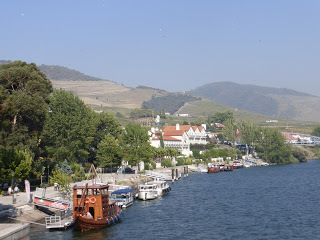
What is the best way for a writer to spend his or her holiday? Should one "switch off" from writing, seize the opportunity to do some reading, or carry on writing, on the basis that it's important to keep the momentum going? This is the sort of question, of course, to which there is no single answer, because so much depends on the personal attitude of the individual writer. But it's still a topic that interests me - I mused on it while I was sunning myself in Portugal recently - and I'm interested in the views of others.

I've seldom done any writing on holiday,and I certainly don't take a laptop with me. At most, I'll make a few notes, even when an idea for a story in the holiday destination springs to mind, as sometimes it does. I find that the sustained concentration I need to write simply isn't possible on holiday,and I don't even find it desirable to try to capture it. There's always a risk of ruining the holiday (a day job crisis once made a bit of a mess of a holiday of mine, about fifteen years ago, and I still recall it with regret.) Some writers go on "retreats" of one kind or another - Gladstone's Library is one popular and very tranquil choice - to get in some sustained writing, and I can certainly see the merit of that, but such retreats are not quite the same as a holiday in the sun (or the rain, if you're unlucky...)
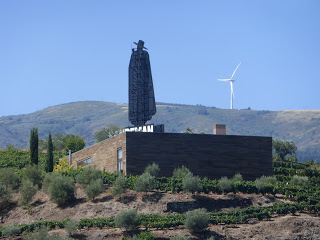
But although I want to enjoy the break, I always like to read when the chance arises. And I read crime rather than getting away from it all with something completely different, simply because I like crime fiction so much, and to me it's a joy and never a hardship to read some of the many books I've never found time for previously. Going on a cruise is great for reading (even a river cruise, where there are no "sea days", and thus less free time), because there's something intensely pleasurable about sailing along, enjoying a good book in the company of ever changing scenery - or even an endless stretch of the ocean - and ,perhaps, later in the day, a glass of something from the bar. When I was in Portugal, I read several novels that will feature as Forgotten Books before long, and good fun they were.

But there's something else about being a writer on holiday. The chance to relax can be very helpful in liberating the mind. To take a specific example, I have for a while been tussling with a plot dilemma in the story idea I am working on for my next novel. Then, while wandering around Porto, the solution simply came to me, at a point when I wasn't consciously looking for it. A eureka moment. Having the luxury of time to think is really beneficial for a writer, in my opinion. And that's a luxury that a holiday affords.

But so much for my thoughts. What do you reckon?

Published on August 20, 2015 03:48
August 19, 2015
Astonishing bookshops and libraries

I'm back in Britain, acclimatising to the change in weather after a blissful holiday in Portugal, combining a stay in Lisbon with a cruise up the gorgeous River Douro. And while I was away, I enjoyed, among many other things, a visit to a contender for the title for "most beautiful bookshop in the world" and some amazing libraries.
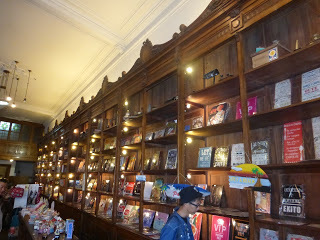

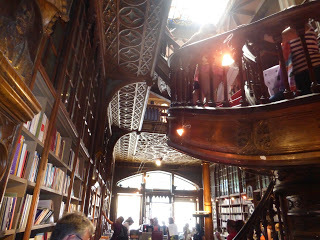
Portugal's a country with a rich and proud history. The old empire has gone, and it's not the most prosperous place in the world, but the climate is fantastic and the local people I met were uniformly charming. They like their literature, too. While visiting the very appealing city of Porto, I discovered the ornate and unforgettable Lello bookstore. Surely there is no other bookshop in the world that can charge people three Euros just to go inside? A large part of the attraction is the shop's association with J.K.Rowling, who spent time there in her early days before achieving fame and fortune. I can see why she liked it (and why she liked Porto.) People were queuing to buy their tickets both in the morning and the afternoon when I was in the vicinity. You don't believe me? Well, here they are:
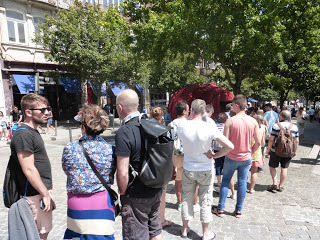
Extraordinary...

I also visited a trio of fantastic libraries during my trip. The first was at the University of Coimbra, one of the oldest and most distinguished academic institutions in the world. The library is stunning, though to protect the books, photography is not allowed. Suffice to say that it's one of the most impressive I've seen, in terms of beauty and grandeur. I was also amused by the existence of an ancient "academic prison" in the same building, which apparently was a sort of dungeon for student malefactors.

While on the Douro, we had a trip to a variety of places, including Salamanca in Spain (the Douro flows through Spain, but is not navigable beyond the border with Portugal, so you have to jump on a bus). Salamanca is breathtaking, and there is a modern public library in an architecturally spectacular setting - the photo is abov. Some people say it's the most beautiful public library in the world, and I certainly haven't seen a more stunning rival.



Another trip ended up at the Mateus Palace and its exceptional gardens, owned by the family responsible for Mateus Rose. (You can't visit Portugal without drinking quite a bit of wine and port, and some of the port in particular was of quite memorable quality.) Inside,the family's private library, which again cannot be photographed, is another sight to behold. Thousands of perfectly preserved old books. I could have stayed there a very long time, even though I can't read Portuguese....



Published on August 19, 2015 05:22
August 17, 2015
One million plus...
I'm just back from my travels, to discover that a little while ago, this blog had its one millionth page view. Like all statistics,this figure should be taken with a large dollop of salt. It doesn't include views or visits to the blog before the current stats started - some time after the blog began. On the other hand, each visitor may view a number of pages per visit. All the same, one million is a big number, and I'd like to say thanks to everyone who has supported this blog over the years. I'm especially grateful to those who have commented or emailed me about topics that I've featured.
How long will Do You Write Under Your Own Name? continue? I really don't know, but the short answer is that I plan to keep it going for as long as I continue to enjoy writing the posts - and one thing I can say is that at present I enjoy the blog as much as I've ever done. There are various reasons for this, one of which is that it's introduced me to a good many lovely people and activities. And it seems to do me good - for instance, I kept the blog going during the most difficult time of my life, five years ago, and it proved unexpectedly and significantly therapeutic.
The joy of writing is the key. I've always believed that writing should be a delight, not a chore. If I don't get pleasure from writing something, why should anyone take pleasure in reading it? Of course, I'm never totally satisfied with what I write, because a few days later I can usually think of a way in which I could have written it better, but that's a different matter. I like to think that readers of my Harry Devlin and Lake District novels buy into the fun that I have in writing the stories, and I'm very glad that reviews of The Golden Age of Murder have consistently picked up on the pleasure I take in the books I write about in that weighty tome.
At present, my plans for the future of the blog are to maintain the mix of subjects much as it is now. I'll talk about my own work from time to time, naturally,but there will be guest blogs, discussion of films and TV, the craft of writing and reviews of new and forgotten books, as well as thoughts about topics that I find interesting. And every now and then I'll seek feedback from you, my loyal readers, as I did recently with a question about the extent to which you are interested in the lives of authors as well as in their books. That's a subject that I do find really fascinating, and I will return to it in the future.
In the meantime, thanks again for all your encouragement over the years.
How long will Do You Write Under Your Own Name? continue? I really don't know, but the short answer is that I plan to keep it going for as long as I continue to enjoy writing the posts - and one thing I can say is that at present I enjoy the blog as much as I've ever done. There are various reasons for this, one of which is that it's introduced me to a good many lovely people and activities. And it seems to do me good - for instance, I kept the blog going during the most difficult time of my life, five years ago, and it proved unexpectedly and significantly therapeutic.
The joy of writing is the key. I've always believed that writing should be a delight, not a chore. If I don't get pleasure from writing something, why should anyone take pleasure in reading it? Of course, I'm never totally satisfied with what I write, because a few days later I can usually think of a way in which I could have written it better, but that's a different matter. I like to think that readers of my Harry Devlin and Lake District novels buy into the fun that I have in writing the stories, and I'm very glad that reviews of The Golden Age of Murder have consistently picked up on the pleasure I take in the books I write about in that weighty tome.
At present, my plans for the future of the blog are to maintain the mix of subjects much as it is now. I'll talk about my own work from time to time, naturally,but there will be guest blogs, discussion of films and TV, the craft of writing and reviews of new and forgotten books, as well as thoughts about topics that I find interesting. And every now and then I'll seek feedback from you, my loyal readers, as I did recently with a question about the extent to which you are interested in the lives of authors as well as in their books. That's a subject that I do find really fascinating, and I will return to it in the future.
In the meantime, thanks again for all your encouragement over the years.
Published on August 17, 2015 05:17
August 14, 2015
Forgotten Book - The Documents in the Case
The Documents in the Case, first published in 1930, is in many ways an unusual book. It's the only novel that Dorothy L. Sayers wrote in collaboration - with Robert Eustace. It's her only novel which does not feature Lord Peter Wimsey. And it's a novel that offers not only an interesting and unorthodox "howdunit" mystery, but also a fictionalised version of the Thompson-Bywaters case that fascinated a good many Golden Age novelists, not least Anthony Berkeley and E. M. Delafield.
Sayers is not by any stretch of the imagination a forgotten writer, but this is the one novel of hers that seems to me to have been generally under-valued. Perhaps it's the absence of Wimsey that accounts for the generally lukewarm critical reaction over the years (though I should add that a number of good judges have also praised the book.) Each time I read it, I find my appreciation of Sayers' skill increasing, even though, in the immediate aftermath of completing the book, she felt that she had failed to do justice to the clever idea at its heart.
In telling the story, she borrowed from Wilkie Collins' The Moonstone. Collins was a writer she greatly admired, and she was at the time she wrote the novel working on a biography of him that she never managed to complete. The events are seen from the point of view of characters in the story, and told in the form of letters. It's a very good device, when used well, and Sayers captures the different voices of the characters splendidly.
It's in the later part of the story, where the scientific material central to the plot is debated, that the narrative flags somewhat. Eustace contributed the scientific ingenuity here, as he did to stories by other writers such as L.T. Meade and Edgar Jepson, but Sayers did the writing. The method she chooses for conveying this material results in a rather abrupt ending, The problem with this section of the book is one of story structure, and I sense that she rushed those final pages, when with a slightly different approach she might have produced a book that would have been more widely acclaimed as an innovative masterpiece. Nevertheless, it's a novel of considerable interest and distinction, and if you aren't familiar with it, then it's definitely worth a read. There's a fascinating chapter about how the book was written, incidentally, in the late Barbara Reynolds' excellent biography of Sayers.
Sayers is not by any stretch of the imagination a forgotten writer, but this is the one novel of hers that seems to me to have been generally under-valued. Perhaps it's the absence of Wimsey that accounts for the generally lukewarm critical reaction over the years (though I should add that a number of good judges have also praised the book.) Each time I read it, I find my appreciation of Sayers' skill increasing, even though, in the immediate aftermath of completing the book, she felt that she had failed to do justice to the clever idea at its heart.
In telling the story, she borrowed from Wilkie Collins' The Moonstone. Collins was a writer she greatly admired, and she was at the time she wrote the novel working on a biography of him that she never managed to complete. The events are seen from the point of view of characters in the story, and told in the form of letters. It's a very good device, when used well, and Sayers captures the different voices of the characters splendidly.
It's in the later part of the story, where the scientific material central to the plot is debated, that the narrative flags somewhat. Eustace contributed the scientific ingenuity here, as he did to stories by other writers such as L.T. Meade and Edgar Jepson, but Sayers did the writing. The method she chooses for conveying this material results in a rather abrupt ending, The problem with this section of the book is one of story structure, and I sense that she rushed those final pages, when with a slightly different approach she might have produced a book that would have been more widely acclaimed as an innovative masterpiece. Nevertheless, it's a novel of considerable interest and distinction, and if you aren't familiar with it, then it's definitely worth a read. There's a fascinating chapter about how the book was written, incidentally, in the late Barbara Reynolds' excellent biography of Sayers.
Published on August 14, 2015 05:00
August 12, 2015
The Exit by Helen Fitzgerald
The Exit, a novel of psychological suspense written by Helen Fitzgerald and published earlier this year by Faber, is one of the best contemporary crime novels I've read in quite a while. It's witty, clever and poignant by turns, and I enjoyed it despite the fact that, in the early pages, I took quite a strong dislike to the narrator, a self-absorbed young woman whose ageism was repellent.
It's a mark of Fitzgerald's literary kill that I warmed to her protagonist, just as I did - at least to some extent - to her extremely irritating mother, who is one of those control freaks who is convinced that she knows what is best for other people, even when, transparently, she does not. Control freaks make interesting studies for fiction, and I thought Fitzgerald did a very good job in showing the motivations of Catherine's mother, and the unintended consequences of her actions.
Catherine reluctantly takes a job in a local care home, and there she encounters an 82 year old woman called Rosie, who is convinced that there is dirty work afoot in the home. Since Rosie suffers from dementia, it is not easy to take what she says seriously, and here again Fitzgerald makes telling points about the way we treat people with impaired mental faculties. Of the three main women characters, Rosie was, for me, by far the most consistently appealing.
The mystery element of the story is relatively thin; it is not too difficult to figure out what is going on. But for me, perhaps untypically, that really didn't matter. The story is told in such a gripping way that I had to keep reading - though I'm not suggesting that such a dark novel will be everyone's cup of tea. I've never read Helen Fitzgerald before, and I've never met her, but she really can write. I wouldn't be surprised if this book picks up awards. Yes, it's that good.
It's a mark of Fitzgerald's literary kill that I warmed to her protagonist, just as I did - at least to some extent - to her extremely irritating mother, who is one of those control freaks who is convinced that she knows what is best for other people, even when, transparently, she does not. Control freaks make interesting studies for fiction, and I thought Fitzgerald did a very good job in showing the motivations of Catherine's mother, and the unintended consequences of her actions.
Catherine reluctantly takes a job in a local care home, and there she encounters an 82 year old woman called Rosie, who is convinced that there is dirty work afoot in the home. Since Rosie suffers from dementia, it is not easy to take what she says seriously, and here again Fitzgerald makes telling points about the way we treat people with impaired mental faculties. Of the three main women characters, Rosie was, for me, by far the most consistently appealing.
The mystery element of the story is relatively thin; it is not too difficult to figure out what is going on. But for me, perhaps untypically, that really didn't matter. The story is told in such a gripping way that I had to keep reading - though I'm not suggesting that such a dark novel will be everyone's cup of tea. I've never read Helen Fitzgerald before, and I've never met her, but she really can write. I wouldn't be surprised if this book picks up awards. Yes, it's that good.
Published on August 12, 2015 11:17
August 10, 2015
Beautiful Shadow by Andrew Wilson
Beautiful Shadow is a very good title for any book, and it's very suitable on several levels for a biography of Patricia Highsmith. Andrew Wilson's book was first published in 2003 and it's been on my shelves ever since. I pored over it from cover to cover in preparation for the Highsmith panel at Harrogate. And it was a fascinating, if lengthy, read.
Highsmith's life was remarkable, and in some ways very sad. She had a deeply troubled family background, which set the pattern for a complex and often unsatisfactory personal life. She had many relationships with other women, and a startling number of people in her life either committed suicide or attempted to do so. Perhaps this tells us something about those to whom she was drawn, but the overall impression I had was one of sadness, that such a gifted woman should have led an existence that was often so melancholy.
She didn't help herself, it seems fair to say. In her youth, she was lovely to look at, and this is the only biography of a crime novelist that I've ever read which includes a nude photograph of its subject. This is, some might say, not something that should be encouraged! Be that as it may, what is startling is her evident physical deterioration within a relatively short time. She drank far too much, and didn't look after her health. As a result, she was plagued with health problems, and I feel sure that these must have affected the quality of some of her later writing. A terrible shame.
Highsmith plainly had several unappealing characteristics, not least a tendency towards racism, but she also had a (very dark) sense of humour,and this shows up often in her fiction; it's a quality of hers that seems to me to be under-estimated. Perhaps suffering and unhappiness helped to make her a great writer - and that's what I think she is. Wilson does, in my opinion, a good job in presented a rounded portrait of a complex woman, and makes excellent use of the private papers to which he had access.
Highsmith's life was remarkable, and in some ways very sad. She had a deeply troubled family background, which set the pattern for a complex and often unsatisfactory personal life. She had many relationships with other women, and a startling number of people in her life either committed suicide or attempted to do so. Perhaps this tells us something about those to whom she was drawn, but the overall impression I had was one of sadness, that such a gifted woman should have led an existence that was often so melancholy.
She didn't help herself, it seems fair to say. In her youth, she was lovely to look at, and this is the only biography of a crime novelist that I've ever read which includes a nude photograph of its subject. This is, some might say, not something that should be encouraged! Be that as it may, what is startling is her evident physical deterioration within a relatively short time. She drank far too much, and didn't look after her health. As a result, she was plagued with health problems, and I feel sure that these must have affected the quality of some of her later writing. A terrible shame.
Highsmith plainly had several unappealing characteristics, not least a tendency towards racism, but she also had a (very dark) sense of humour,and this shows up often in her fiction; it's a quality of hers that seems to me to be under-estimated. Perhaps suffering and unhappiness helped to make her a great writer - and that's what I think she is. Wilson does, in my opinion, a good job in presented a rounded portrait of a complex woman, and makes excellent use of the private papers to which he had access.
Published on August 10, 2015 06:59
August 7, 2015
Forgotten Book - Quick Curtain
Quick Curtain by Alan Melville very definitely counted as a Forgotten Book, at least until a few weeks ago, when it reappeared in the British Library's Crime Classics series. Originally published in 1934 by Skeffington, it was one of a handful of books that Melville dashed off as a young man in the Thirties, before making his name as a wit and broadcaster.
Melville was a humorous writer, and the simple fact is that humour is a very personal thing. What one reader finds hilarious may leave another reader cold. There haven't been many major British writers of "comic crime" over the years whose books have stood the test of time. Colin Watson is an exception that proves the rule; Joyce Porter was rather more variable, although at her best she is very funny. So I must admit that, when I first sat down to read Quick Curtain, my expectations were not especially high.
This was also partly because I was aware that Dorothy L. Sayers, who herself had a robust sense of humour, had reviewed the book rather negatively in the Sunday Times. But much as I admire Sayers' reviews - has there ever been a more outstanding female critic of crime fiction? - this is one occasion when I didn't agree with her. Quick Curtain really did amuse me.
It's a skit on the theatre world, a world that Melville knew well. The story, and the detective work, are not to be taken too seriously, but this is a mystery that begins with a death on stage, and entertained me right to the end. And I'm delighted to report that there seem to be plenty of readers out there who enjoy the book as well. I'm told by the British Library that, on the basis of sales to date, it's shaping up to be one of the most popular entries in their remarkably successful series of Crime Classics.
Melville was a humorous writer, and the simple fact is that humour is a very personal thing. What one reader finds hilarious may leave another reader cold. There haven't been many major British writers of "comic crime" over the years whose books have stood the test of time. Colin Watson is an exception that proves the rule; Joyce Porter was rather more variable, although at her best she is very funny. So I must admit that, when I first sat down to read Quick Curtain, my expectations were not especially high.
This was also partly because I was aware that Dorothy L. Sayers, who herself had a robust sense of humour, had reviewed the book rather negatively in the Sunday Times. But much as I admire Sayers' reviews - has there ever been a more outstanding female critic of crime fiction? - this is one occasion when I didn't agree with her. Quick Curtain really did amuse me.
It's a skit on the theatre world, a world that Melville knew well. The story, and the detective work, are not to be taken too seriously, but this is a mystery that begins with a death on stage, and entertained me right to the end. And I'm delighted to report that there seem to be plenty of readers out there who enjoy the book as well. I'm told by the British Library that, on the basis of sales to date, it's shaping up to be one of the most popular entries in their remarkably successful series of Crime Classics.
Published on August 07, 2015 03:00
August 5, 2015
Margaret Murphy - Believe No One - guest blog

It's my great pleasure today to host a guest blog piece from Margaret Murphy, former CWA chair, founder of Murder Squad, top writer and all-round lovely person. She is pictured above in an American homicide department. To learn more about this and a trip via Tulsa (known to me previously solely as somewhere that Gene Pitney was only 24 hours away from...), just read on...Over to you, Margaret:
"I’ve known Martin Edwards for nearly twenty years. At first, he was the man with the astonishing knowledge of crime fiction. I imagined him living in a big old Victorian house crammed floor-to-ceiling with arcane texts, first editions and encyclopaedias – a cross between Hogwart’s library and oh, let’s say, The Bodleian. So I was delighted when this erudite fellow agreed to be one of the founding members of Murder Squad, a roving band of British crime writers. The Squad is still going strong fifteen years on, and I am now proud to number Martin among my friends. I am currently relishing his non-fiction text The Golden Age of Murder which draws on his enviable knowledge of the genre. He has revealed details of the Golden Age mystery writers’ lives which not only surprise, but which I for one would never have imagined. No wonder it’s yomping up the charts!
Here’s a modest revelation of my own: I am both Margaret Murphy and A.D. Garrett (cue gasps of surprise), and I’m here today to talk about the A.D. Garrett forensic thrillers. BELIEVE NO ONE, which has just been released in the USA, is the second in the series, and it brings the cop/forensic duo of Fennimore and Simms stateside in the hunt for a serial killer.
The story opens with an Oklahoma farmer dragging a cottonwood tree (and a body – obv) out of one of his ponds. Now, what Oklahomans call a ‘pond’, we Brits would call a sizeable lake, and this theme of familiarity and difference – two nations divided by a common language – sets the scene for the rest of the novel.
I travelled to America’s Midwest to research the novel with my husband (Murf), and forensic advisor (Dave Barclay) in 2012. Nothing brings home the vastness of the American landscape like being on the road, and we visited Homicide Detectives, CSIs, District Attorneys, judges, State Bureau agents and Medical Examiners from Tulsa, Oklahoma, clear to St Louis and the Missouri-Illinois state line, clocking up well over 1,000 miles. The fictional killer in BELIEVE NO ONE trawls Interstate-44 for victims, and it was a shock to discover that Oklahoma has its own real-life interstate killer. The I-40 killer committed a dozen murders before he was finally caught in 2009, and many other predators stalk the interstate highways. Truckers are top of the list of suspects: it’s hard to trace a killer who can abduct a victim in one state, murder her in the next, and dump her body in a third. One detective said, ‘I’d put every one of them on CODIS, I had my way.’ Of course, that went into the novel.
Fans of the genre know that a murder mystery should never be just about the murder. It has to be about people: the victims; those they leave behind – and those who seek justice for them. And again and again, it was the people we met in law enforcement who shaped the novel. In BELIEVE NO ONE, mothers and children are abducted, and the children remain missing. So it was a priority to meet consultants from ‘Team Adam’, a non-profit organisation dedicated to finding missing children. The two consultants we met were proud that Team Adam had reunited every child separated from their families by Hurricane Katrina, but one added sadly that some of those children clung to their foster parents and did not want to go home. That story haunted me, and is reflected in the questionable decision a deputy sheriff makes about a child’s future as the novel draws to a close.
I blogged the entire research trip, day-by-day on the A.D. Garrett website – a good place to start would be here – after which you can follow the links forward in time. I would love to welcome you – please do feel free to ask questions or leave comments!
You can buy BELIEVE NO ONE on AmazonUK in all formats, and on AmazonUS in hardback, with Kindle edition to follow soon!"
Published on August 05, 2015 10:41
August 3, 2015
100 American Crime Writers - Steven Powell
Palgrave Macmillan publish an interesting list of academic books on a variety of crime fiction topics. One gripe - common, alas, to almost all academic publishers - is that the books are very pricey. This means that, for the overwhelming majority of individual readers who don't have the book-buying budget of some institution, they will be out of reach in terms of a personal purchase. But they are often worth tracking down via a library.
I mention this because 100 American Writers is a book that I think will appeal to a significant number of readers. The writers are discussed in short, snappy summaries by a range of writers, and the book doesn't become bogged down by academic jargon, footnotes or endless appendices, although there is a bibliography and a useful list of suggested further reading.
I came across the book a few weeks ago by chance, as it is edited by Steven Powell, who organised Liverpool University's recent conference about James Ellroy. Steven has provided introductory editorial material, and also gathered together a pleasing range of contributors, including among many others J.Kingston Pierce of the Rap Sheet, one of the best crime blogs around. Steven's wife Diana, a fellow Liverpool academic, but originally from the US, is another, and I was glad to find that she was the author of the section on that fascinating Golden Age writer C. Daly King., Another contributor is Chris Routledge, whose guest blog here about a British novelist in the Golden Age tradition, Simon Nash, attracted a good deal of interest.
The authors covered are predominantly more modern than King (for instance, Diana also covers Megan Abbott), but there were several names from the past that I was glad to see featured, including Melville Davisson Post and the brilliant Fredric Brown. For anyone seeking an introduction to American crime fiction, this book will make a very good choice.
I mention this because 100 American Writers is a book that I think will appeal to a significant number of readers. The writers are discussed in short, snappy summaries by a range of writers, and the book doesn't become bogged down by academic jargon, footnotes or endless appendices, although there is a bibliography and a useful list of suggested further reading.
I came across the book a few weeks ago by chance, as it is edited by Steven Powell, who organised Liverpool University's recent conference about James Ellroy. Steven has provided introductory editorial material, and also gathered together a pleasing range of contributors, including among many others J.Kingston Pierce of the Rap Sheet, one of the best crime blogs around. Steven's wife Diana, a fellow Liverpool academic, but originally from the US, is another, and I was glad to find that she was the author of the section on that fascinating Golden Age writer C. Daly King., Another contributor is Chris Routledge, whose guest blog here about a British novelist in the Golden Age tradition, Simon Nash, attracted a good deal of interest.
The authors covered are predominantly more modern than King (for instance, Diana also covers Megan Abbott), but there were several names from the past that I was glad to see featured, including Melville Davisson Post and the brilliant Fredric Brown. For anyone seeking an introduction to American crime fiction, this book will make a very good choice.
Published on August 03, 2015 01:30



